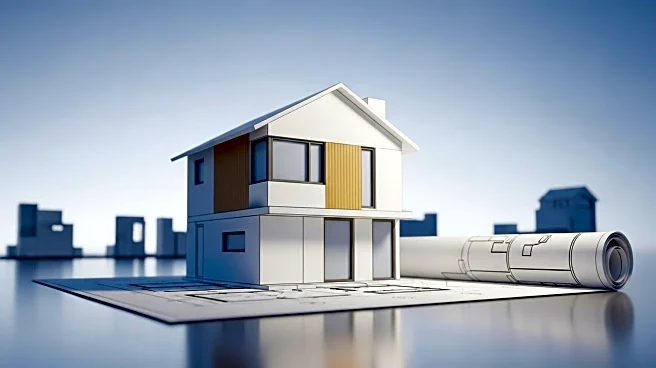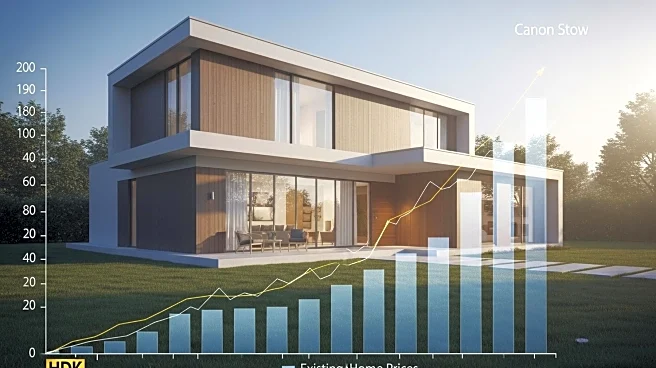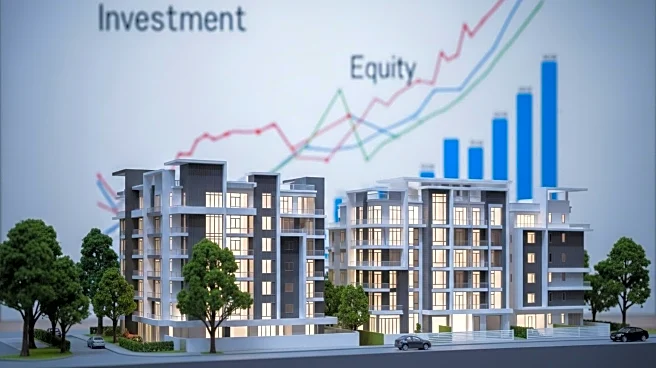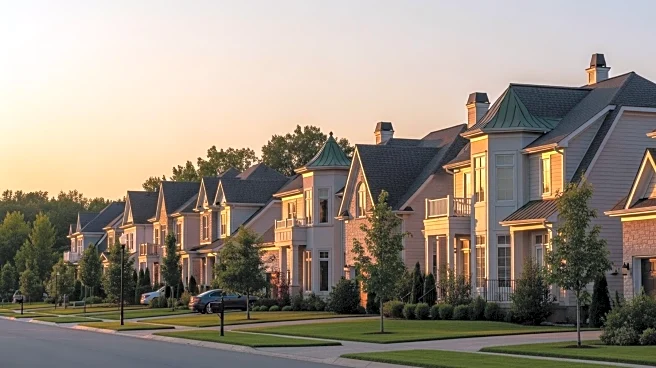What is the story about?
What's Happening?
Recent data from the National Association of Realtors (NAR) indicates a shift in the U.S. housing market, where new homes are currently cheaper than existing ones. In August, existing home sales fell by 0.2% from July, reaching a seasonally adjusted annual rate of 4 million. Conversely, new home sales surged to an annual rate of 800,000, marking a 20.5% increase from the previous month. This trend is attributed to builders offering smaller, more affordable homes and providing price discounts to attract buyers. The median sale price for new homes in August was $413,500, while existing homes were priced at $422,600. Builders have been increasingly offering price reductions, with 39% of homebuilders providing discounts in September, the highest in over five years.
Why It's Important?
The current dynamics in the housing market have significant implications for affordability and buyer behavior. The trend of new homes being cheaper than existing ones could make homeownership more accessible, particularly for first-time buyers. This shift may also influence the strategies of homebuilders and real estate agents, as they adapt to changing consumer preferences and market conditions. The decline in mortgage rates, although not substantial enough to impact all homeowners, could stimulate increased activity in the housing market, potentially leading to a more robust fall sales season. However, builders' caution in offering price cuts and the decrease in homebuilding permits suggest potential challenges in maintaining this trend.
What's Next?
As mortgage rates continue to decline, the housing market may experience increased activity, with more buyers returning to the market. The narrowing price gap between new and existing homes suggests a possible return to traditional pricing dynamics. Builders may adjust their strategies, focusing on margins rather than sales, which could impact the availability of affordable new homes. The ongoing changes in inventory levels and buyer affordability will likely shape the market's trajectory in the coming months.
Beyond the Headlines
The current market conditions highlight broader economic factors influencing the housing sector, such as interest rates and consumer confidence. The trend of new homes being cheaper than existing ones challenges conventional market expectations and may lead to long-term shifts in housing development and urban planning. Additionally, the emphasis on affordability and incentives reflects broader societal concerns about housing accessibility and economic stability.
AI Generated Content
Do you find this article useful?














